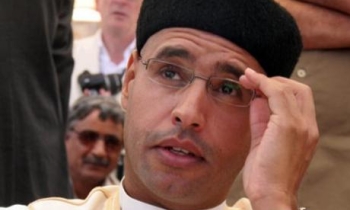It will be interesting, now that the presidential campaign is over, to see if the nonfiction bestseller list gets back to its usual diet of biography and history and sex. Surely the Swift Boat guys will float away and the Kitty Kelleys and the Lies and the Lying Liars will hibernate for another four years. Or will they? Maybe a taste for partisan prose and image has taken hold. The number of Americans who regularly watch Fox News has increased by nearly half since 2000 while audiences of other cable outlets have been more or less flat, according to a recent study by the Pew Research Center. PBS is airing two new right-leaning public affairs shows, the Journal Editorial Report and Tucker Carlson: Unfiltered. On the liberal end, Air America, the answer to Rush Limbaugh and Co., floundered at first but seems to be well off the ground now, with high ratings in some of its thirty-five markets. And Fahrenheit 9/11 grossed $213 million worldwide in a little more than three months. We remain a red/blue nation, and the Pew study points out that people’s news habits, to some extent anyway, are beginning to reflect their politics.
Maybe all the talk about media bias has it backwards; maybe we should start to consider reader and viewer bias instead. Maybe people simply want their own opinions reinforced. Some observers believe we may soon see a partisan news culture driven by economics, as the fragmented media seek audience niches by catering to their politics. Anne Applebaum of The Washington Post is among those who think that this is already happening. "The media are reverting to a more combative, pre-television norm," she writes, "a time when partisanship was normal and you picked up your newspaper in the morning with a clear idea of the writers’ opinions." Such a time was very pre-television. Still, some in the press might cheer such a morning, when they’d be free at last from the strain of reporting all sides. But we’re holding our applause. We’d rather not live in an America that builds ever-higher and thicker walls between its cultural and intellectual tribes. Such a society won’t be stable in the end.
There is another way to weigh this trend, however: maybe readers and viewers are not so much growing insular as searching for meaning in a vast universe of fact and factoid, and embracing a political bent is one way of organizing it. We live in a thick media fog, advertised at and argued at from every available platform. When people watch, say, Jon Stewart’s Daily Show, they don’t just want to laugh. They want some clues about what to laugh at, and why. They’re looking, in part, for something serious.
Consider how little help the press offers people in cutting through all that fog. We have said this before in these pages: journalists have been cowed by accusations of bias and, as their owners stretch for profits, squeezed for the time and resources to do a proper job. As a result, they too often offer a vapid and neutered version of the news that merely adds to the confusion.
One of the interesting findings in the Pew study, but one that received less attention than the part about political polarization, was that Americans have not fled from in-depth news. While newspapers and network news have generally declined, magazines like The New Yorker, The Atlantic, and Harper’s have held their own over the past half-dozen years, and broadcast outlets like NPR, the NewsHour, and C-Span have actually made gains. NPR in particular has doubled its number of listeners in ten years, and, according to Pew, the NPR audience pretty much mirrors the American profile – about a third liberal, a third conservative, and a third moderate. These in-depth outlets provide a far better kind of beacon for readers and viewers than shout-show partisan ideology – thoughtful analysis and informed judgment based on deep reporting. And they’re doing okay. Maybe there’s a lesson there.









